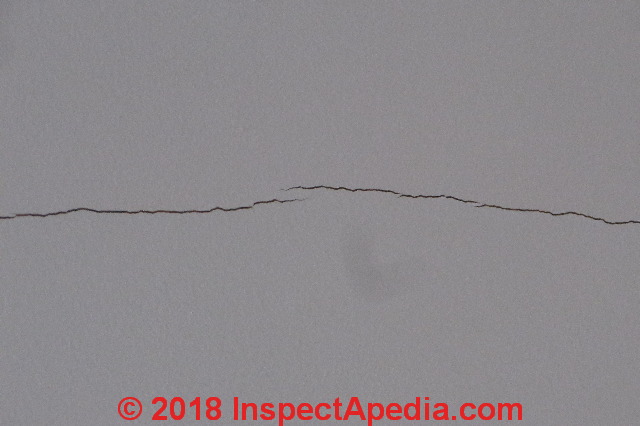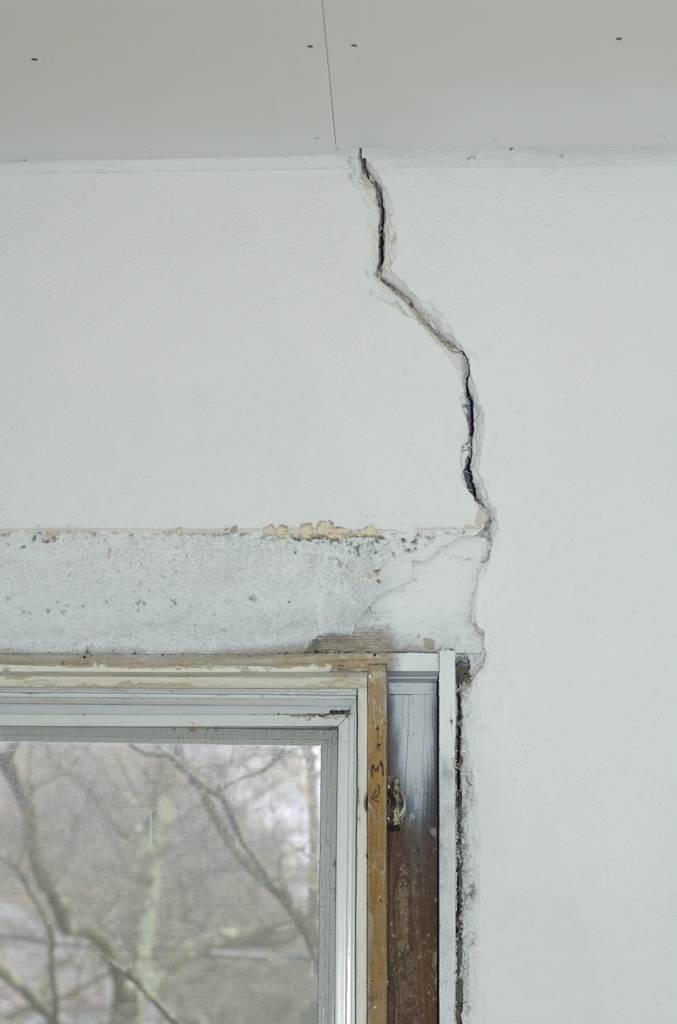What Causes Spider Cracks In Plaster
How to Tell if Your Lath & Plaster Ceiling Needs to Come Down. Period Charm? We all love the period charm of an older house but what to do when repairing something as notorious as a lath and plaster ceiling? It can be difficult to find that point where you need to stop repairing a ceiling because removing the ceiling is the cheaper option. I always shed a tear when an original old lath and plaster ceiling comes down, as I can’t shake the feeling that the house will lose a little of its character. But times change and our expectations with them, for example, modern light fittings simply do not sit well in lath and plaster. At least not without a lot of work or compromise.
Cost is also a big factor, during major renovations ripping out a ceiling and plasterboarding it is not that big a deal cost wise, especially in comparison to hiring in lime and plaster specialists to repair the ceilings. Whereas any competent DIY enthusiast or local builder can replace lath and plaster with plasterboard relatively cheaply. Since you are here though, you’ve probably got a sagging ceiling or one that is badly cracked and falling off the laths. Caveats first though OK.
Plaster ceilings in some listed houses may need to be retained and repaired rather than removed (check first!). OK, enough blurb, lets take a look at your plasterwork. Evaluating whether to repair or remove your lath and plaster ceilings. Stand underneath one corner of your ceiling on a suitable ladder and with your head almost touching the ceiling look across the surface, do a 9. Try again from the opposing corners. Your ceiling may look flat from the floor, but once you get up there and have a closer look, you will get a much better idea of its condition.
How to Seal or Repair Cracks in Concrete Floors & Walls SEAL CRACKS in CONCRETE, How To - CONTENTS: Recommended methods for sealing cracks in concrete floors & slabs. A major structural problem with your home is probably every homeowner's worst nightmare. Find information about how foundation problems can effect the value of.
Lath and plaster in . Old houses settle and the ceilings go along for the ride. So, if your ceiling is sagging or sloping, it may still be OK. In any sagging areas where you suspect that the plaster has separated from the lath, stand underneath and gently push upwards with the palm of your hands.

A little give is normal but if you feel the plaster move up and down, this means that it is not attached to the laths. Dust and debris may fall from cracks as you do this. NOTE: Don’t go crazy here, if you push and shove a really bad ceiling hard a few times, you might end up ! Effectively this means that the plasterwork is hanging underneath the laths, virtually unsupported. Sometimes it is only the horse hair strands in the mortar that is holding up the plasterwork! This rarely happens over the entire area though. Some areas may be perfectly fine.
De pool filter information, and guide to DE pool filter repair with FAQ on common DE pool filter problems. Home » Upper and Lower Limb » Swollen Leg and Swelling of the Feet, Ankle and Toes Swollen Leg and Swelling of the Feet, Ankle and Toes. Posted by Dr. It’s a difficult decision isn’t it? We all love the period charm of an older house but what to do when repairing something as notorious as a lath and plaster ceiling? Drywall Cracks Cause & prevention of cracks or ridging in plasterboard or gypsum board ceilings & walls. DRYWALL CRACKS - CONTENTS: what are the causes of drywall or. Regarding your example to fix cracks in drywall using the “3M patch plus primer” product after first applying fiberglass mesh drywall tape, may I assume your. Random or Systematic? Cracks in plaster happen for a variety of reasons. Lumber shrinkage, seasonal moisture changes, wind forces, foundation movement, expansive clay. Ceiling cracks are more than unsightly, they might suggest a structural issue such as foundation shifting.
Avoid cracks by insuring your instrument is properly humidified and well protected with an apporiate case.

If left in this perilous state, chunks of plasterwork will eventually start to crack and even drop away, either in small pieces or in large sheets if there is a water leak or even someone jumping on the floor above etc. Keep or start over? It becomes a question of percentages. Once more than a third of a ceiling has failed, replacement may be a cheaper option than repairs. Check the entire ceiling as described above and mark any areas that you think have separated with big pencil circles.
From the floor try to judge how much of the ceiling has failed from your marks. More than a third to a half?
Because repairing a lath and plaster ceiling like this can be expensive, or beyond your ability as a DIY enthusiast, you might say enough is enough and sadly, “I want to take the ceiling down” and start over. Need More Information or Help? Urban legend has it that you only need to read six books on a subject to be classed as an . So, here are some books I found interesting which will be useful to get you started!
Or drop me a comment and ask a question. All available fromamazon. Not destined for the coffee table. Hardback. Don’t be deceived, this book may be at home on the coffee table, but it packs a lot of really useful information into its 2. Passed and approved by my favorite .
Repair not restore or renovate. If you are into minimalistic, white flat surfaces and recessed downlights, this book may be a shock for you, as it educates us to live with a buildings character, not destroy it. Maintenance of Historic Buildings, A practical Handbookby Jurgen Klemisch. A practical, hands- on guide to the maintenance of your older house. Based on many years of experience, this book teaches you the current best practices related to maintenance and is presented using a straightforward logical format.
In two sections the book deals with maintenance for use by owners and how to conduct condition surveys. The book makes extensive use of helpful checklists, work cards detailing routine cleaning, deep cleaning, inspection, servicing and redecoration; and even spreadsheets to help plan your maintenance. Following the books recommendations would also (over time) build a useful record about your house, which will be helpful when deciding the timing of future repairs and allow you to assess costs accurately. A damp house is a dying house.
By Jonathan Hetreed. Hardback. I thought that I would include this book because as the owner of an older property you will soon come to learn that water or damp is the mortal enemy of your house! Managing the moisture and water, on, in and around your home is vital in the battle to preserve and protect it. From the patio to the ridge, water is trying to get into your house and cause damage!
Read Jonathan’s insights and learn how to keep it at bay. The Victorian House manual from Haynes. The Victorian House Manual By Haynes. A no nonsense book that even Conservation Officers like and use! This book covers some of the most common problems found in houses built in this era, along with some of the more common misconceptions about some of the repairs commonly touted as being able to “cure all ills”. As you would expect from Haynes these books have great photos and easy to understand and follow instructions.
A hard to beat primer for anyone owning or thinking of buying a Victorian (or Edwardian for that matter) house. Guide to using natural finishes.
Using Natural Finishes: Lime and Clay Based Plasters, Renders and Paints – A Step- by- step Guide By Adam Weismann. Adam Weismann’s book is more specialized than those above and would suit the hard core enthusiast who wants to have a go at repairing their old walls and ceilings themselves. Kevin Mc. Cloud from Grand Designs comments that it is “A splendid book.
A real addition to what’s out there and very complementary to the Society for the Protection of Ancient Buildings’ new technical manual on Old Building Repairs”. Lath and Plaster Ceilings: Forgive this sneaky plug for my own guide on lath and plaster! It contains all you need to know to: Evaluate the condition of your ceilings. Learn 7 ways to repair your ceilings.
Learn 5 ways to replace your ceilings. Learn how to easily remove your ceilings. Ti 50 Mr 2012 Generic Cymbalta. I’ll be happy to hear from you about your own lath and plaster problems, because if I can help you, it’s probably going to help others too. Available in e. Book or paperback worldwide via amazon. Endnote! Click the image to see more.
Ceiling Crack Repair . When cracks occur in the. Ceiling. cracks may be a result of the natural aging process of your home, but they. If you find ceiling cracks in your home. This is common in older homes; ceiling. Signs that your ceiling cracks are a.
Cracks in a spider web pattern. Very fine, small cracks. Cracks towards the edge of the ceiling. Moisture damage is another common cause of ceiling. This can be caused by moisture issues in either. Moisture issues. are normally the result of poor drainage or.
If your ceiling cracks are the result of. Cracks and crumbling drywall. Wall and floor cracks.
Discoloration or peeling paint. Poor exterior drainage or waterproofing. Foundation failure is also a common cause of ceiling.
If your foundation begins to settle or sink over. Foundation problems can lead to. The symptoms of ceiling cracks resulting. Large cracks, over 1/1. Cracks toward the center of ceiling.
Vertical ceiling cracks that continue down walls. Sagging or bowed ceilings. Cracks near load- bearing walls.
Foundation settlement or cracks. Solutions for Ceiling. Cracks. If your ceiling cracks are the result of foundation. Failure to do. so may result in further foundation issues and more.
There are many different underpinning. Ceiling cracks. can be repaired with following: Steel Piers - . Steel push piers are. These underpinning products are driven. Then, the weight of the structure is transferred. Helical Piers - .
Helical piers work much. If you have ceiling cracks.